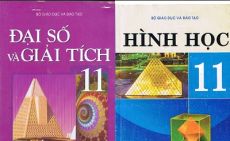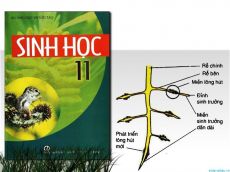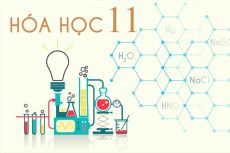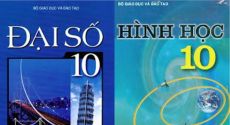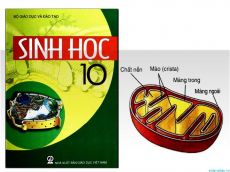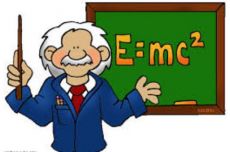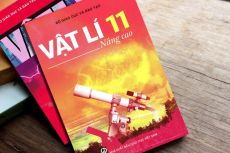Choose the best answer:
Teachers provide a model for children to _________.
Hãy suy nghĩ và trả lời câu hỏi trước khi xem đáp án
Lời giải:
Báo saiGiải thích:
allow(v): Cho phép
Behave(v): Cư xử
Change(v): Thay đổi
Dịch: Giáo viên cung cấp một mô hình cho trẻ em để bắt chước
Câu hỏi liên quan
-
Read the following passage and choose the best answer (A, B, C, D):
Most of the viewers imagine that the presenter does little (1)______arrive at the studio a few minutes before the broadcast, read the weather, and then go home. In fact, this image is far from the truth. The two-minute (2) ____ which we all rely on when we need to know tomorrow’s weather is the result of a hard day’s work by the presenter, who is actually a highly-qualified (3)_______. Every morning, after a weather forecaster arrives at the TV studios, his/her first task of the day is to collect the latest data from the National Meteorological Office. The information is very detailed and includes predictions, satellite and radar pictures, as well as more technical data. After gathering all the relevant material from this office, the forecaster has to (4)________ the scientific terminology and maps into images and words which viewers can easily understand. The final broadcast is then carefully planned. The presenter decides what to say and in what order to say it. Next a “story board” is drawn up which lays out the script word for word. The time allocated for each broadcast can also alter. This is because the weather report is screened after the news, (5)__________ can vary in length. The weather forecaster doesn’t always know how much time is available, which means that he/she has to be thoroughly prepared so that the material can be adapted to the time available -
Read the following passage and choose the best answer (A, B, C, D):
200 years ago there were less than one billion humans living on earth. Today, according to UN calculations there are over 7 billion of us. Recent estimates suggest that today’s population size is roughly equivalent to 6.9% of the total number of people ever born. This is the most conspicuous fact about world population growth: for thousands of years, the population grew only slowly but in recent centuries, it has jumped dramatically. Between 1900 and 2000, the increase in world population was three times greater than during the entire previous history of humanity—an increase from 1.5 to 6.1 billion in just 100 years. How the world population is changing is of great importance for humanity’s impact on the Earth’s natural environment, but it also gives reasons to hope for a good future. This is because we have a bigger team of better educated people who can contribute to the solutions that improve global well-being. A picture of the world population in the very long-run shows extremely rapid growth. Indeed, for a long time the world population grew at an increasing rate. However, if we focus on the last couple of decades, we see that this pattern no longer holds, as the annual rate of population growth has been recently going down. 1962 saw the growth rate peak at 2.1%, and it has since fallen to almost half. A long historical period of accelerated growth has thus come to an end. Based on these observations, world history can be divided into three periods marked by distinct trends in population growth. The first period, pre-modernity, was a very long age of very slow population growth. The second period, beginning with the onset of modernity— which was characterized by rising standards of living and improving health—had an increasing growth rate that continued to rise through 1962. Today, the second period is over, and the third period is unfolding; the population growth rate is falling and will likely continue to fall, leading to an end of population growth towards the end of this century.
2. According to paragraph 1, what is the most conspicuous fact about world population growth? -
Mark the letter A, B, C, or D on your answer sheet to indicate the undelined part that needs correction in each of the following questions:
Over the past 600 years, English has grown from a language of few speakers to become the dominant language of international communication. English as we know it today emerged around 1350, after having incorporated many elements of French that were introduced following the Norman invasion of 1066. Until the 1600s, English was, for the most part, spoken only in England and had not extended even as far as Wales, Scotland or Ireland. However, during the course of the next two centuries, English began to spread around the globe as a result of exploration, trade (including slave trade), colonization, and missionary work. Thus, small enclaves of English speakers became established and grew in various parts of the world. As these communities proliferated, English gradually became the primary language of international business, banking and diplomacy.
Currently, about 80 percent of the information stored on computer systems worldwide is in English. Two-thirds of the world’s science writing is in English, and English is the main language of technology, advertising, media, international airports, and air traffic controllers. Today there are more than 700 million English users in the world, and over half of these are non-native speakers, constituting the largest number of non-native users than any other language in the world.According to the passage, all of the following contributed to the spread of English around the world EXCEPT .
-
Read the following passage and choose the best answer (A, B, C, D):
Light-emitting diodes (LEDs) are now considered the future of lighting due to a lower energy requirement to run, a lower monthly price tag, and a longer life than traditional incandescent light bulbs. Nick Holonyak, an American scientist at General Electric, accidently invented the red LED light while trying to create a laser in the early 1960s. As with other inventors, the principle that some semiconductors glowed when an electric current was applied had been known since the early 1900s, but Holonyak was the first to patent it for use as a light fixture. Within a few years, yellow and green LEDs were added to the mix and used in several applications including indicator lights, calculator displays, and traffic lights, according to the DOE. The blue LED was created in the early 1990s by Isamu Akasaki, Hiroshi Amano, and Shuji Nakamura, a group of Japanese and American scientists, and for which they won the 2014 Nobel Prize in Physics. The blue LED allowed scientists to create white LED light bulbs by coating the diodes with phosphor Today, lighting choices have expanded and people can choose different types of light bulbs, including compact fluorescent (CFL) bulbs work by heating a gas that produces ultraviolet light and LED bulbs. Several lighting companies are pushing the boundaries of what light bulbs can do, including Phillips and Stack. Phillips is one of several companies that have created wireless light bulbs that can be controlled via smartphone app. The Phillips Hue uses LED technology that can quickly be turned on or off or dimmed by a flick on a smart phone screen and can also be programmed. The higher-end Hue light bulbs can even be set to a large range of colors (only about sixteen million) and synced with music, movies, and video games. Stack, begun by engineers from Tesla and NASA, developed a smart light bulb using LED technology with a wide range of functions. It can automatically sense the ambient lighting and adjust as needed, it turns off and on via motion sensor when someone enters the room, can be used as a wake up alert, and even adjusts color throughout the day to fit with human’s natural circadian cycles and patterns of natural light. The light bulbs also have a built-in learning program that adapts to inputs given by residents over time. And all of these functions can be programmed or monitored from any smart phone or tablet. It is estimated that Stack smart light bulbs can use about sixty percent less energy than a typical LED light bulb and lasts between twenty and thirty thousand hours depending on the model . These light bulbs are compatible (or soon will be) with many of the options for turning an entire home into a smart home including usage with Amazon Alexa, Google Home, and Apple HomeKit.
8. Which of the following best serves as the title of the passage? -
Read the following passage and choose the best answer (A, B, C, D):
If you want to spend your time effectively, you can try the following tips. First, make a to-do list every day. Put the most important tasks at the top, even if they’re things you’re dreading, and tackle them first. Include things you want to do on your list too, so you have items you’re looking forward to. Try motivating yourself with a reward if you get to everything on your list. Once you know what you need to do, keep your work with you. That way, if you find yourself with extra time – while in the train or bus or waiting for an appointment – you can get something done. Additionally, don’t be afraid to say no. It’s OK to say no if your friend asks you to go to a movie one night but you have a test the next morning. Instead, find a time that works for both of you and go to see the movie then. Managing your time also includes finding you productive time. Are you a morning person or a night person? You’ll be more efficient of you work when you’re at your best. Last but not least, create a dedicated study time. Set up a time devoted only to studying or homework. Shut off you phone and respond to calls or texts when your work is finished. Don’t check email or surf the web (except when you need to for the work you’re doing) during this time either.
4. You should set your time for studying when you are ________________ -
Read the following passage and choose the best answer (A, B, C, D):
Just as optical fibers have transformed communication, they are also revolutionizing medicine. These ultra - thin, flxible fiers have opened a window into the living tissues of the body. By inserting optical fibers through natural openings or small incisions and the threading them along the body's established pathways, physicians can look into the lungs, intestines, heart and other areas that were formerly inaccessible to them. The basic fiber-optics system is called fiberscope, which consists of two bundles of fibers. One, the illuminating bundle, carries light to the tissues. It is coupled to a high-intensity light source. Light enters the cores of the high-purity silicon glass and travels along the fibers. A lens at the end of the bundle collects the light and focuses it into the other bundle, the imaging bundle. Each fibers in the bundle transmits only a tiny fraction of the total image. The reconstructed image can be viewed through an eyepiece or displayed on a television screen. During the last five years, improved methods of fabricating optical fibers have led to a reduction in fiberscope diameter and an increase in the number of fibers, which in turn has increased resolution. Optical fibers can also be used to deliver laser light. By use of laser beams, physicians can perform surgery inside the body, sometimes eliminating the need of invasive procedures in which healthy tissue must be cut through to reach the site of disease. Many of these procedures do not require anesthesia and can be performed in a physician's office. These techniques have reduced the risk and the cost of medical care.
1. What is the main topic of the passage? -
Read the following passage and choose the best answer (A, B, C, D)
Andrew Jackson Beard lived an extraordinary life for a black American inventor. Unlike the vast majority of inventors who never profit from their patents, he profited from his inventions. Andrew Beard was born a slave on a plantation in Woodland, Alabama, in 1849, shortly before slavery ended. He received emancipation at age 15 and he married at age 16. Andrew Beard was a farmer, carpenter, blacksmith, a railroad worker, a businessman and finally an inventor. He grew apples as a farmer near Birmingham, Alabama for five years before he built and operated a flour mill in Hardwicks, Alabama. His work in agriculture led to tinkering with improvement for plows. In 1881, he patented his first invention, an improvement to the double plow, and sold the patent rights for $4,000 in 1884. His design allowed for the distance between the plow plates to be adjusted. That amount of money would be the equivalent of almost $100,000 today. In 1887, Andrew Beard patented a second plow and sold it for $5,200. This patent was for a design that allowed the pitch of the blades of plows or cultivators to be adjusted. The amount he received would be the equivalent of about $130,000 today. In 1897, Andrew Beard patented an improvement to railroad car couplers. His improvement came to be called the Jenny Coupler. It was one of many that aimed to improve the knuckle coupler patented by Eli Janney in 1873 (patent US138405). The knuckle coupler did the dangerous job of hooking railroad cars together, which formerly was done by manually placing a pin in a link between the two cars. Beard, himself had lost a leg in a car coupling accident. As an ex-railroad worker, Andrew Beard had the right idea that probably saved countless lives and limbs. Beard received three patents for automatic car couplers. These are US594059 granted November 23, 1897, US624901 granted May 16, 1899, and US807430 granted on May 16, 1904. While there were thousands of patents filed at the time for car couplers, Andrew Beard received $50,000 for the patent rights to his Jenny coupler. This would be just shy of 1.5 million dollars today. Congress enacted the Federal Safety Appliance Act at that time to enforce using automatic couplers. Andrew Jackson Beard was inducted into the National
Inventors Hall of Fame in 2006 in recognition of his revolutionary Jenny coupler
8. Which of the following can be inferred from the passage? -
Read the following passage and choose the best answer (A, B, C, D):
A question I was asked about the readiness for independence (or lack thereof) during the last stage of adolescence (ages 18 - 23) was this: “How can parents teach independence?” From what I’ve seen, there are at least four components to this training: responsibility, accountability, work, and self-help. And this instruction can start as soon as (1) ____ begins, (usually between ages 9 and 13) if not before. Young people who learn independence can often say: “I (2) ____ my freedom by acting responsibly (I did what was right even when it was hard to do),” “I was held (3) ____ for my bad choices and paid for my mistakes (I faced my consequences),” “I worked to get a lot of what I wanted (it wasn’t all handed to me),” “I developed the resourcefulness to help myself (4) ____ with difficulty (I met my problems head on).” Young people who seem to get stuck in their dependent ways often have parents who, with the most loving motivation, undermine the growth of independence. They give freedom without demanding evidence of responsibility. “If you really want to do it, that’s enough for us to say okay.” They rescue from or ignore bad choices without (5) ____ on accountability. “You didn’t know any better so we’ll overlook what you did.” They provide whatever is wanted without having the child work for any of it. “We’ll just get it for you.” They weaken with so much help when difficulties arise that the capacity for self-help is disabled. “We’ll fix what you did and take care of it -
Read the following passage and choose the best answer (A, B, C, D):
Hidden beneath the waves of the Tyrrhenian Sea near southwestern Italy lies a newfound volcanic mosaic dotted with geothermal chimneys and flat-topped seamounts. This complex is new to both science and the planet, geologically speaking; it’s only about 780,000 years old. Scientists aren’t particularly surprised to find volcanism in the region, which is home to active volcanoes like Mount Vesuvius and Mount Etna. But the new complex is unusual because it was created by a rare kind of fault, said study leader Fabrizio Pepe. The western Mediterranean is seismically restless because of the collision of three tectonic plates: the African, the Eurasian and the Anatolian. Making matters more complex is a small chunk of crust called the Adriatic-Ionian microplate, which broke off of the African Plate more than 65 million years ago and is now being pushed under the larger Eurasian Plate in a process called subduction. Previously, scientists discovered a series of undersea volcanic arcs created by this tectonic unrest, starting near the Sardinian coast, with increasingly younger arcs southward and eastward. These arcs were like an arrow pointing ever farther eastward, prompting Pepe and his colleagues to search for an even younger arc about 9 miles off the coast of Calabria. There, based on seafloor mapping, seismic data and magnetic anomalies, the researchers found a 772-square-mile region of lava flows, volcanic mountains and hydrothermal chimneys; vents in the seafloor allow hot minerals to spew out and form chimney-like structures. They dubbed the new area the Diamante‐Enotrio‐Ovidio Volcanic‐Intrusive Complex, after three flat-topped seamounts that dominate the seafloor. Those fractures are what allowed magma to rise to the surface at the Diamonte-EnotrioOvidio complex, creating an undersea landscape of lava flows and mountainous volcanoes. These volcanic seamounts are now plateaus because they protruded from the ocean when the sea level was lower, and they eroded into their present, flat-topped shape, Pepe said. The volcanic complex is inactive, but there are small intrusions of lava in some parts of the seafloor there. However, the area could become active in the future, Pepe said, and active volcanism is ongoing on the eastern side of the Tyrrhenian Sea. The researchers are working to build a volcanic risk map of the complex to better understand if it could endanger human life or property. They are also investigating the possibility of tapping the complex to produce geothermal energy.
4. According to paragraph 2, what does NOT contribute to the seismic disturbance in the Mediterranean region? -
Read the following passage and choose the best answer (A, B, C, D):
While trust in media as a whole may be at an all-time low, a new study by the EBU has shown the public’s trust in traditional media (broadcast and the written press) is actually on the rise. However, people’s trust in new media continues to fall: 61% of European countries distrust the internet while 97% have no faith in social networks. The EBU’s new report – Trust in Media 2018 – shows the figures illustrating the differences between people’s trust in traditional and new media. Broadcast media remain the most trusted forms of media with 59% of people tending to trust radio (equivalent to 2017) and 51% trusting TV in the EU (an increase of 1 percentage point on 2017). Trust in the written press has also slowly improved over the last 5 years and it is now trusted by 47% of EU citizens. At the same time, people’s trust in the internet and social media has been eroded by fake news, misinformation and disinformation. Only 34% of EU citizens trust the internet and a mere 20% now trust social networks (down from 36% and 21% respectively in 2017). Trust in Media 2018 is based on data published in the 88th Eurobarometer survey and gives an idea of European citizens’ perception of the trustworthiness of different types of media. The survey consists of approximately 1000 face-to-face interviews in the 33 countries covered by the study. The report shows how European citizens’ trust in broadcast media is closely connected with a free and independent press. The higher the level of trust in a country’s radio and TV, the higher press freedom in that country tends to be. There are also strong regional differences with the Nordics and Albania tending to trust traditional media the most while Eastern Europeans tend to trust social networks and the internet more. The EBU’s Head of Strategy and the Media Intelligence Service Roberto Suárez Candel said: “The results of our research show that good quality, impartial media is highly valued by the public. “Public service media play an important role in that and, together, our Members make an invaluable contribution to society. The role of our public service Members in upholding democratic values and supporting media freedom is clearly demonstrated by the results of our research.”
6. Which of the following statements is TRUE, according to the passage? -
Read the following passage and choose the best answer (A, B, C, D):
Saving the planet is very much in vogue. It’s also in Harper’s Bazaar, Elle and Mademoiselle. It’s the message on fashion runways, in marketing strategies, in jewelry and accessory designs, on shopping bags and totes, in advertisements and on price tags. A naked fashion model wearing a hat of birch branches and lichen, as shown in Vogue this month, may not be everyone’s idea of environmental awareness. But the pervasiveness of ecological themes in the images and marketing of fashion is undeniable. It is also somewhat paradoxical. The fashion industry, whose driving philosophy involves encouraging consumers to discard the old and embrace the new, is now trying to push itself to the forefront of efforts to conserve and preserve. The environmental theme in fashion began as wispy touches and graphic exhortations in designer collections, not as some well-thought-out strategy of “green” marketing in which the environmental advantages of a product become part of the sales approach. Tendrils of ivy dangled from the ceiling at a Paris fashion show; a carpet of grass covered a runway in New York; models marched along in T-shirts or carrying signs all bearing slogans like “Clean Up or Die,” “Save the Sphere,” and “Environmental Protection Agents”. The environmental spin on fashion has now moved into the mass market, where ‘’clothes with conscience’‘ make an extra tug at the buyer’s self-image. Bonjour, a jeans and sportswear company based in New York, has embarked on a program to ’‘change the individual’s outlook toward saving the environment’’ through educational tags. This summer, the first wave of what Bonjour executives said would be 50 million fashion items a year are to arrive in stores carrying tags with environmental tips from how to save water to how to reduce pollutants. Whether these tributes to nature will benefit the environment or even raise environmental awareness, with concomitant changes in individual behavior, is not clear. There is some skepticism. Professor Ewen says the new environmental symbolism should be viewed as part of an overall change in America’s economy, from one built on industrial production of hard goods to one based on “pure representation”. “Going back to fashion, the environment has become a commercial cliche separated from real concerns. What can be attached to this year’s fashion is merely the symbolism of environmental sanity.”
4. The word “wispy” in paragraph 3 is closest in meaning to _______ -
Choose the best answer:
My teacher always gives me advice ____ suitable career in the future. -
Read the following passage and choose the best answer (A, B, C, D):
Although television was first regarded by many as “radio with pictures,” public reaction to the arrival of TV was strikingly different from that afforded the advent of radio. Radio in its early days was perceived as a technological wonder rather than a medium of cultural significance. The public quickly adjusted to radio broadcasting and either enjoyed its many programs or turned them off. Television, however, prompted a tendency to criticize and evaluate rather than a simple on-off response. One aspect of early television that can never be recaptured is the combined sense of astonishment and glamour that greeted the medium during its infancy. At the midpoint of the 20th century, the public was properly agog about being able to see and hear actual events that were happening across town or hundreds of miles away. Relatively few people had sets in their homes, but popular fascination with TV was so pronounced that crowds would gather on the sidewalks in front of stores that displayed a working television set or two. The same thing happened in the typical tavern, where a set behind the bar virtually guaranteed a full house. Sports events that might attract a crowd of 30,000 or 40,000 suddenly, with the addition of TV cameras, had audiences numbering in the millions. By the end of television’s first decade, it was widely believed to have greater influence on American culture than parents, schools, churches, and government-institutions that had been until then the dominant influences on popular conduct. All were superseded by this one cultural juggernaut. The 1950s was a time of remarkable achievement in television, but this was not the case for the entire medium. American viewers old enough to remember TV in the ’50s may fondly recall the shows of Sid Caesar, Jackie Gleason, Milton Berle, and Lucille Ball, but such high-quality programs were the exception; most of television during its formative years could be aptly described, as it was by one Broadway playwright, as “amateurs playing at home movies.” The underlying problem was not a shortage of talented writers, producers, and performers; there were plenty, but they were already busily involved on the Broadway stage and in vaudeville, radio, and motion pictures. Consequently, television drew chiefly on a talent pool of individuals who had not achieved success in the more popular media and on the young and inexperienced who were years from reaching their potential. Nevertheless, the new medium ultimately proved so fascinating a technical novelty that in the early stages of its development the quality of its content seemed almost not to matter. Fortunately, the dearth of talent was short-lived. Although it would take at least another decade before areas such as news and sports coverage approached their potential, more than enough excellence in the categories of comedy and drama emerged in the 1950s to deserve the attention of discriminating viewers. They are the most fondly remembered of the Golden Age genres for both emotional and intellectual reasons. Live TV drama was, in essence, the legitimate theatre’s contribution to the new medium; such shows were regarded as “prestige” events and were afforded respect accordingly. The comedies of the era are remembered for the same reason that comedy itself endures: human suffering and the everelusive pursuit of happiness render laughter a necessary palliative, and people therefore have a particular fondness for those who amuse them
8. The passage can probably extracted from which of the following? -
Read the following passage and choose the best answer (A, B, C, D):
For hundreds of years, giving flowers have been a social means of communication. In the United States, flowers are often given during rites of passage, for commemorating special occasions or as a heartfelt gift between loved ones and friends. Flower gifting also occurs in most countries around the world. However, the meanings and traditions often vary. While students traditionally gave their favorite teacher an apple in past years, in China, teachers are given flowers. Peonies are by far the flower most often given in China. They are also quite popularly used for weddings. Strangely, potted plants are not considered a pleasant gift among Asian cultures. The people believe that like a plant confined by a pot, the gift symbolizes a binding or restriction. In Russia, in lieu of giving birthday presents, the guest of honor receives a single flower or an unwrapped bouquet. Floral arrangements or baskets are not given. Russians celebrate a holiday known as Woman’s Day. Traditional gifts include red roses, hyacinths or tulips. When there is a funeral or other occasion where someone wishes to express sympathy, carnations, lilies or roses are given in circular configurations, which signify the transition of birth, life and death to rebirth. In this instance, the color of choice is commonly yellow. For joyous occasions, arrangements and bouquets generally contain an odd number of flowers In the times of ancient Rome, brides carried flowers to scare away evil spirits and encourage fertility. The Dutch believed that flowers were food for the soul. When invited to someone’s home in Great Britain, it is tradition to bring a gift of flowers. All types are acceptable except white lilies, which are usually seen at funerals. Not unlike the United States, red roses are a symbol of love. Flowers are generally gifted in odd numbered increments regardless of the occasion. However, the Brits also have superstitions regarding the number 13, so the number is avoided. In the southern region of the continent, flowers are traditionally given during Christmas. Egyptians are much more conservative and restrict flower gifting to funerals and weddings. While certain flowers may have significant meanings for some, flowers in Las Vegas and across the United States flowers are an accepted gift for any reason desired.
7. In which country should not people bring white lilies to other houses? -
Read the following passage and choose the best answer (A, B, C, D):
The Internet has truly transformed how students do their homework. (1)______ homework today still means spending time in the library, it’s for a different reason. Rather than using books for research, students today are (2)______ to the Internet to download enormous amounts of data available online. In the past, students were limited to their school’s (3)______ of books. In many cases, they got to the school library and found out that someone had already taken the books they needed. Nowadays, such inconvenience can be avoided since the Internet never runs out of information. Students, however, do have to (4)______ sure that the information they find online is true. Teachers have also benefited from the homework which is done on the Internet. They do not need to carry students’ papers around with them any more. This is because online (5)______ allow students to electronically upload their homework for their teachers to read and mark. Of course, this also means that students can no longer use the excuse that the dog ate their homework! -
Read the following passage and choose the best answer (A, B, C, D):
Once restricted to luxury or super-tech buildings, home automation is proving to be an increasingly fundamental and affordable addition to architectural projects. The idea is to connect devices, which in turn connect and talk through a centralized control unit, accessible by computers, tablets, and mobile phones. For example, home automation users can turn the lights on or off at specific times each day, adjust the heater or air conditioner to turn on a few minutes before they arrive home. In addition to these immediate effects, monitoring applications can also provide accurate home information by generating detailed reports on equipment that could be working better or spending less. That is, in addition to smartphones and personal computers, appliances and sensors are able to identify patterns, process information, and perform tasks both through commands and automatically. Although it sounds like a science fiction script, these are technologies that are not so far from us. Artificial intelligence can be used to automate threat detection and perhaps more proactively alert us if something looks wrong, such as heat sensors and video cameras setting off alarms and calling firefighters in the event of a short circuit. Through facial recognition algorithms on social media, the system itself can tell if someone outside your circle of acquaintances is trying to access your space and send a message to your mobile phone. This type of technology can improve the efficiency of security systems and reduce false alarms. Automation can be useful for people with disabilities and for the elderly. People with Parkinson’s disease or other motor diseases can trigger switches without touching them, and motion sensors can trigger safety lights automatically. Blood pressure sensors and blood sugar levels can be incorporated into these systems, providing peace of mind to close relatives. The ability to automate repetitive housekeeping can free time for more important things. For example, an internet-connected refrigerator can check for missing items and make purchases online. It is important to mention that these systems must be highly protected, as a single attempt to break into this centralized system can lead to the invasion of privacy and the loss of valuable confidential information. Still, most people who have experienced life in an automated space will likely be uncomfortable returning to traditional systems
6. Which of the following statements is TRUE, according to the passage? -
Each sentence has a mistake. Find it by chosing A B C or D
The 22nd Southeast Asian Games really became a festival that impressed sports enthusiasts with its spirit: solidarity, friendship and prosperous
-
Mark the letter A, B, C, or D on your answer sheet to indicate the undelined part that needs correction in each of the following questions:
One of the highest honors for formalists, writers, and musical composers is the PulitzerPrize. First awarded in 1927, the Pulitzer Prize has been won by Ernest Hemingway, Harper Lee,John F. Kennedy, and Rodgers and Hammerstein, among others. As with many famous awards,this prize was named after its founder, Joseph Pulitzer.
Joseph Pulitzer’s story, like that of many immigrants to the United States, is one ofhardship, hard work and triumph. Born in Hungary, Joseph Pulitzer moved to United States in1864. He wanted to be a reporter, but he started his American life by fighting in the AmericanCivil War. After the war, Pulitzer worked for the German - language newspaper, the WestlichePost. His skills as a reporter were wonderful, and he soon became a partial owner of the paper.
In 1978, Pulitzer was able to start a newspaper of his own. Right from the first edition,the newspaper took a controversial approach to new. Pulitzer wanted to appeal to the averagereader, so he produced exciting stories of scandal and intrigue. Such an approach iscommonplace today, but in Pulitzer’s time it was new and different. The approach led to thediscovery of many instances of corruption by influential people. Pulitzer ‘paper became veryfamous and is still produced today.
The success of Joseph Pulitzer’s newspaper made him a very wealthy man, so he wantedto give something back to his profession. Throughout his later years, he worked to establishuniversity programs for the teaching of journalism, and he funded numerous scholarships toassist journalism students. Finally, he wanted to leave a legacy that would encourage writers toremember the importance of quality. On his death, he gave two million dollars to ColumbiaUniversity so they could award prizes to great writers
The Pulitzer Prize recipients are a very select group. For most, winning a Pulitzer Prize isthe highlight of their career. If an author, journalist, or composer you know has won a PulitzerPrize, you can be sure they are at the top of their profession.aWhich sentece about Joseoph Pulitzer is true according to the reading passage?
-
Read the following passage and choose the best answer (A, B, C, D):
Though overwhelmed by the news of the novel coronavirus outbreak, Munyaradzi Gurure, the 21-year-old student at Guangxi University of Finance and Economics from South Africa, has still stepped out to serve as a volunteer in the train station to help battle the epidemic. “I’m well aware the situation of epidemic prevention and control is very severe,” he said. “Seeing that many people actively joined in the fight, I also wanted to do my part and volunteer at the station.” With the number of novel coronavirus cases continuing to rise both in and outside of China, Gurure’s family back in South Africa was very worried about his health, and hoped he would quit the volunteer job. “I told my parents China has taken a lot of strong quarantine measures and is actually safe,” he said. “I want to do whatever I can to prevent the spread of the infection. The country took really good care of me during the last three years.” Working about four hours a day, Gurure either carries an 8-kilogram electric sprayer to disinfect the waiting room or checks passengers’ temperature as soon as they walk into the station. He also makes sure people are in good health and wearing masks at all times. Though it’s not easy work, Gurure came across many Chinese who are very surprised to see a foreign face, but then give a thumbs up and say “very good” to him in Chinese. Gurure’s foreign classmates found out about his volunteer job and sent messages saying “good job”, some showing interest in joining him to help curb the spread of the virus.
4. The word “they” in paragraph 3 refers to _______ -
Read the following passage and choose the best answer (A, B, C, D):
Nuclear family, also called elementary family, in sociology and anthropology, is a group of people who are united by ties of partnership and parenthood and consisting of a pair of adults and their socially recognized children. Typically, but not always, the adults in a nuclear family are married. Although such couples are most often a man and a woman, the definition of the nuclear family has expanded with the advent of same-sex marriage. Children in a nuclear family may be the couple’s biological or adopted offspring. Thus defined, the nuclear family was once widely held to be the most basic and universal form of social organization. Anthropological research, however, has illuminated so much variability of this form that it is safer to assume that what is universal is a “nuclear family complex” in which the roles of husband, wife, mother, father, son, daughter, brother, and sister are embodied by people whose biological relationships do not necessarily conform to the Western definitions of these terms. In matrilineal societies, for example, a child may be the responsibility not of his biological genitor but of his mother’s brother, who fulfills the roles typical of Western fatherhood. Closely related in form to the predominant nuclear-family unit are the conjugal family and the consanguineal family. As its name implies, the conjugal family is knit together primarily by the marriage tie and consists of mother, father, their children, and some close relatives. The consanguineal family, on the other hand, typically groups itself around a unlineal descent group known as a lineage, a form that reckons kinship through either the father’s or the mother’s line but not both. Whether a culture is patrilineal or matrilineal, a consanguineal family comprises lineage relatives and consists of parents, their children, and their children’s. Rules regarding lineage exogamy are common in these groups; within a given community, marriages thus create cross-cutting social and political ties between lineages. The stability of the conjugal family depends on the quality of the marriage of the husband and wife, a relationship that is more emphasized in the kinds of industrialized, highly mobile societies that frequently demand that people reside away from their kin groups. The consanguineal family derives its stability from its corporate nature and its permanence, as its relationships emphasize the perpetuation of the line.
6. The word “lineage” in paragraph 3 could be best replaced by ___________




